Pioneer XPRS82 Bedienungsanleitung
Pioneer
Lautsprecher
XPRS82
Lies die bedienungsanleitung für Pioneer XPRS82 (10 Seiten) kostenlos online; sie gehört zur Kategorie Lautsprecher. Dieses Handbuch wurde von 9 Personen als hilfreich bewertet und erhielt im Schnitt 4.5 Sterne aus 5 Bewertungen. Hast du eine Frage zu Pioneer XPRS82 oder möchtest du andere Nutzer dieses Produkts befragen? Stelle eine Frage
Seite 1/10

Instruction Manual
XPRS2 Series
XPRS82 / XPRS102 /
XPRS122 / XPRS152 /
XPRS1152ST / XPRS1182ST
Active Loudspeaker / Active Subwoofer
pioneerdj.com/support/
For other support information for this product, visit the above site.

How to read this manual
Thank you for choosing this speaker. To make sure you get the most from
its functions and use them effectively, please read the Instruction manual
and Precautions for Use carefully.
Please keep the Instruction manual and Precautions for Use together
with the Warranty.
Main features
2 000-W high output and high sound quality are achieved by mounting
a D-class amplier module in a wooden cabinet featuring outstanding
acoustic characteristics. The XPRS2 can be used not only as a stationary
sound system in a stationary facility but also as sound equipment for
events as it can be easily transported and set up quickly.
•
System type: Multi-purpose, active loudspeaker with DSP controls
•
Transducer driver: 1-inch exit compression driver, 1.75-inch voice coil
•
Subwoofer: ferrite woofer, 3-inch (76 mm) voice coil with long excursion
•
Power rating: Class D 2 000 W (peak)
•
4 DSP modes: LIVE/MUSIC/SPEECH/MONITOR
•
Subwoofer: 80 Hz, 100 Hz, 120 Hz (NORMAL, BOOST, EXTENDED
LF)
•
Electronic protections: Thermal/overload/digital limiter/compressor
•
Power supply: AC 110 V – 240 V (50 Hz / 60 Hz)
•
Enclosure construction: Plywood cabinet, black paint, rubber feet,
metal handle
•
Mounting: One metal standard pole-mount, 10 x M10 threaded inserts
plus integrated pull-back cover
Rear panel
(full-range models)
I TNP U
MI IN EC /L
S OTE RE
H ZI-
PO RWE
HI IN E-Z /L
SI GSI G
MIC
SI G
SI I M ERG/ L IT
OFF
MA X
OFF
MA X
OFF
MA X
DI TAL S L PR GGI IG NA OC ESS IN
DSP
D AYIS PL
MA TES R
VO L
1 2 3
MI X OU T
2
e
5
d
c
b
a
9
8
3
4
1
6
7
1
AC INPUT
Connect the power cord to AC IN and then to the power outlet.
2
POWER
AC switch for turning the power on or off. When POWER is turned ON,
the POWER LED and the LCD screen both light up.
3
INPUT1
Level control for the LINE/MIC INPUT 1.
INPUT
Balanced input for sources such as mixing consoles, instruments, or
microphones. Connections can be made via a 1/4-inch TRS or XLR
connector.
4
INPUT2
Level control for the Hl-Z/LINE INPUT 2.
INPUT
Balanced input for sources such as mixing consoles, instruments, or
microphones. Connections can be made using a 1/4-inch TRS or XLR
connector.
5
STEREO LEVEL
Line input level control for STEREO.
6
INPUT LEVEL
Level control of the individual input.
7
Hl-Z signal light
When sound from a guitar is input, the system setting changes to Hl-Z
sensitivity and the signal light turns on.
8
MIC signal light
When sound from a microphone is input, the light turns on when the
system setting changes to MIC sensitivity.
9
SIG single channel signal light
When there is a signal, the signal light turns on.
a
LCD
DSP control and monitoring interface.
b
MASTER VOL
Total volume adjustment range: -60 dB – +10 dB.
DSP
Scroll through the menus and choose from the options. Press the
MASTER VOL knob to select an item on a menu.
c
SIG/LIMITER signal light
Lights up green when there is a signal, and red when the amplifier
starts to compress.
d
POWER indicators
Llights up when the speaker is turned on.
e
MIX OUT
The XLR output sends mixed input signals to other speakers or
subwoofers. INPUT LEVEL controls the level of the signal sent to the
MIX OUT. The MASTER VOL or DSP control settings do not affect the
mixed output.
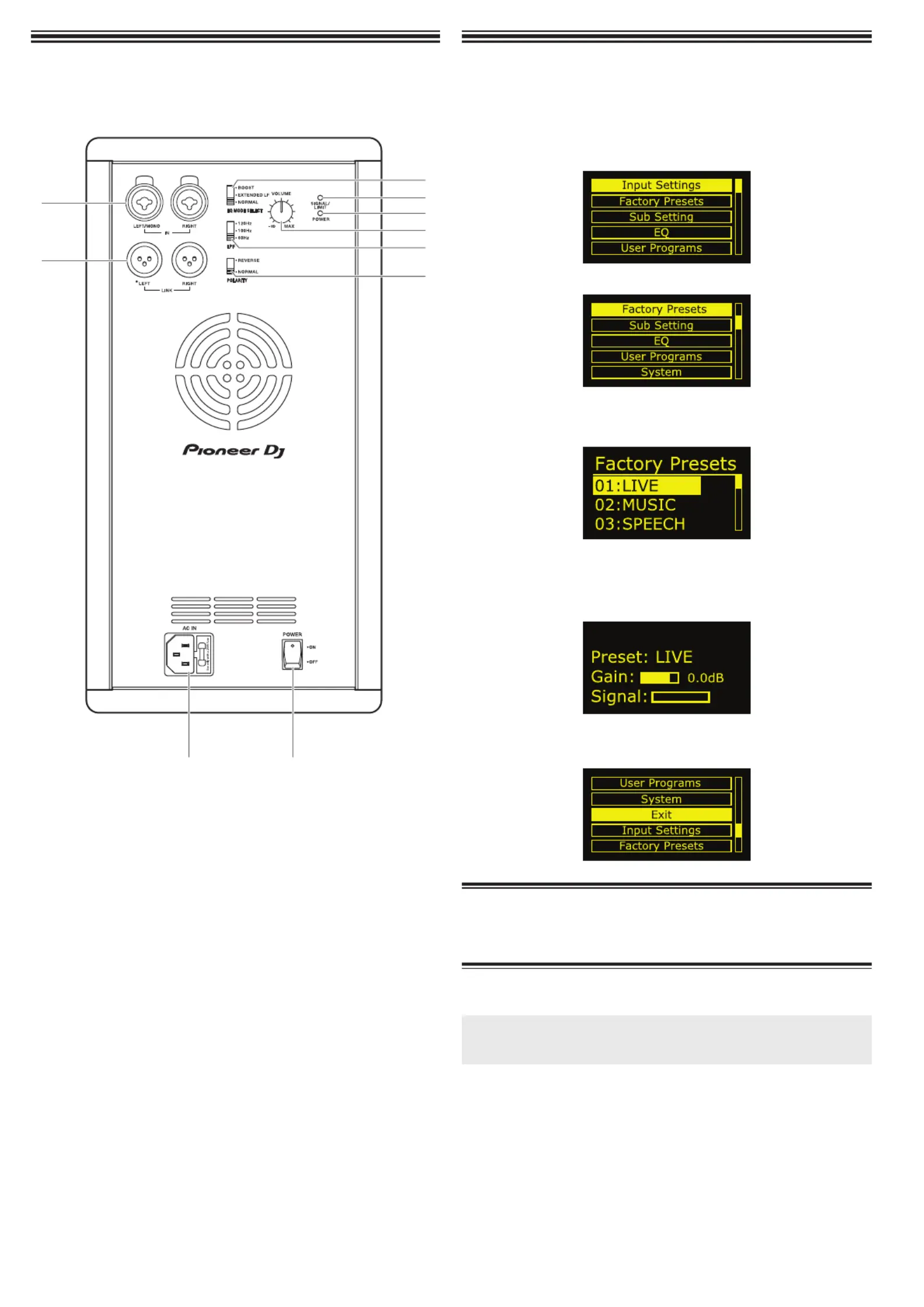
Rear panel
(subwoofer model)
1 2
3
4
5
a
8
9
6
7
1
AC INPUT
The AC connection is established via the IEC connector. The IEC
connector is compatible with a lockout power cord (not included).
2
POWER
AC switch for turning the power on or off. When POWER is turned on,
the LED lights up.
3
LINK
The XLR output sends mixed input signals to other speakers or
subwoofers. VOLUME (input level) controls the level of signal sent to
LINK. The MASTER VOL and DSP control settings do not affect the
LINK signal.
4
INPUT LEFT (mono)/RIGHT
5
POWER indicators
The POWER LED lights up when the speaker is turned on.
6
SIG/LIMITER signal light
Lights up green when there is a signal, and red when the amplifier
starts to compress.
7
3DSP PRESET MODES
BOOST/EXTENDED LF/NORMAL
8
LPF
80 Hz/100 Hz/120 Hz
9
POLARITY
REVERSE/NORMAL
a
VOLUME
Level control of an input signal.
DSP control
With the integrated DSP control menu, you can choose from multiple
DSP and system settings on the speaker.
To access the DSP control menu, follow the steps below.
1. Press the MASTER VOL knob and the DSP control menu will
appear.
2. Use the MASTER VOL knob to scroll through the menu items.
3. Press the MASTER VOL knob to select the menu item you want to
modify.
The menu item you chose will open on the right side of the DSP menu.
4. Use the MASTER VOL knob to scroll through the menu items.
5. Press the MASTER VOL knob to select a setting.
The setting will be saved and you will return to the level above in the
menu.
XPRS122
6. Repeat steps 2 through 5 to modify other DSP and system settings.
7. Select EXIT to return to the main screen.
Full-range speaker DSP control menu
Full-range speaker DSP control menus are included on the XPRS82,
XPRS102, XPRS122 and XPRS152 units.
EXIT menu item
Use the EXIT menu item to return to the home screen.
NOTE
After a minute of menu inactivity, the display turns off but the speaker
continues working as normal.
Produktspezifikationen
| Marke: | Pioneer |
| Kategorie: | Lautsprecher |
| Modell: | XPRS82 |
Brauchst du Hilfe?
Wenn Sie Hilfe mit Pioneer XPRS82 benötigen, stellen Sie unten eine Frage und andere Benutzer werden Ihnen antworten
Bedienungsanleitung Lautsprecher Pioneer
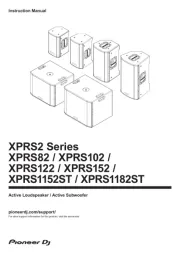
2 August 2025
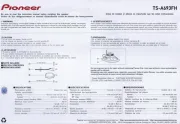
2 August 2025
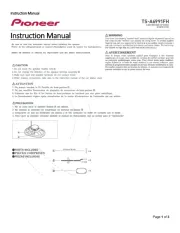
1 August 2025
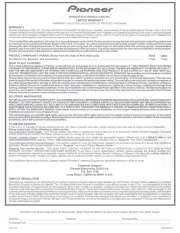
1 August 2025
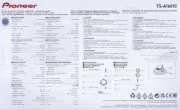
1 August 2025
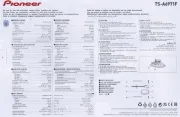
1 August 2025
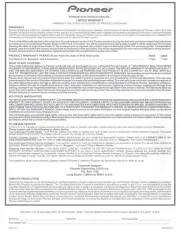
1 August 2025
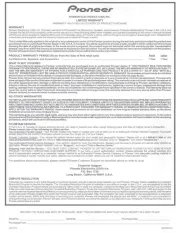
1 August 2025
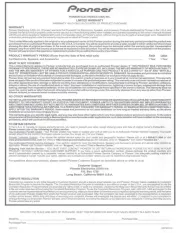
30 Juli 2025
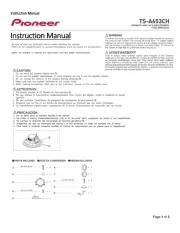
30 Juli 2025
Bedienungsanleitung Lautsprecher
- CyberData Systems
- ANT
- TM Electron
- Karma
- KEF
- Brane Audio
- VisionTek
- Edenwood
- Stereoboomm
- Megasat
- DCM
- Rega
- Bluesound
- Apogee
- HMDX
Neueste Bedienungsanleitung für -Kategorien-
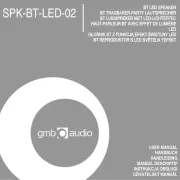
6 August 2025
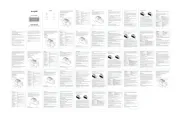
6 August 2025
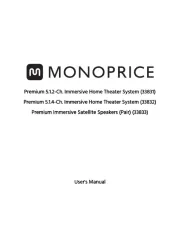
6 August 2025
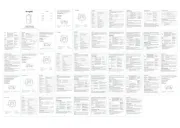
6 August 2025

6 August 2025
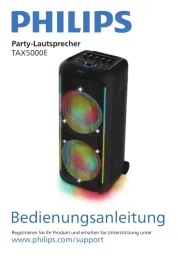
6 August 2025

6 August 2025

6 August 2025
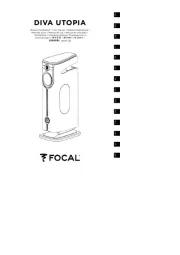
6 August 2025
